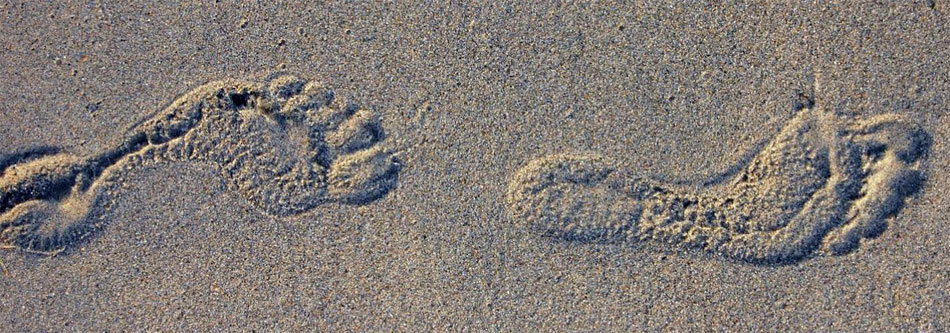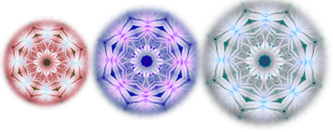
In our previous article Feet – the key to optimal alignment and healthy central nervous system we learned how correct alignment of our feet affects our physical structure, but also our central nervous system and our overall health. Today we will explore how we can use our feet as a foundation to a correct asana alignment.
Learning the fundamental techniques of using our feet to achieve optimal alignment on the mat and prevent injuries that often result from a repetitive micro-trauma due to a misalignment is the key for any asana practitioner. In today’s crowded yoga studios there is not a lot of room for detailed instruction and many cues point to the result of the action, rather than on how the action should be performed. Cues like “move your knee over the ankle, square your hips or move your right hip back” are being used omitting the importance our feet have in these actions. This makes the student execute the movement from the joint, rather than allowing the joint to move from the action of the feet. In a long run this may lead to micro-traumas, tension, pain and joint malfunction that occur due to a compensatory muscle engagement and unnecessary compression. This is why the activation of the feet is crucial to correct alignment of the joints and their protection in all postures, even those where our feet don’t contact the ground.
Pada Bandha is an important component in asana. It can only be awakened and activated if the feet are open, flexible and the energy flow is unobstructed. In Sanskrit “pada” means “foot”, and bandha means “lock” or “harness”. Bandhas are used to draw the energy upward. Pada Bandha supports the lift of the arches and the optimal alignment of the joints in the legs and the pelvis. It also supports Mula Bandha or the “root lock”, which helps to stabilize the pelvic muscles, supporting the whole spine and our posture from the pelvis up.
In asana, the weight should be distributed evenly throughout the body, and in standing postures all muscles of the legs should be engaged. Our quadriceps is a very strong muscle and often gets down to work as soon as we assume any leg weight bearing position, leaving the hamstrings, the inner and the outer thighs disengaged. It is useful to remember that grounding of the heel engages the hamstring muscles and that the outer thighs get activated from the grounding of the outer heel, while the activation of the inner thighs depends on the grounding of the inner heel. The even weight distribution together with correct foot grounding and muscle engagement is what helps us to lift out of our joints and maintain an optimal alignment. This provides space and efficient joint lubrication, rather than compression and misalignment, which in a long term leads to joint degeneration.
When implementing these techniques please remember that the emphasis on either the inner or the outer edge is always very subtle and all four corners of the foot have to be grounded. Another thing to remember when practicing is to never hyperextend your joints, focus on micro-bending your knees, this will further engage the muscles of the legs and protect the joints.
To better understand how the grounding of our feet affects the whole body structure within asana will also help us understand how it affects our alignment off the mat. Take a wide stance with your feet parallel to each other, place your hands on your hips and with your eyes closed feel the position of your pelvis. Now place more weight on the inner edges of the feet and feel what happens within your hips. Repeat this few times if you are having a hard time to recognize how the pelvis responds to the shift of your weight between the neutral position of the feet and the inner edges. Remember it is a very subtle shift, that’s why many of us don’t even realize we are out of alignment. If you would like to experience even more obvious shift in the pelvis, slowly move between grounding of the inner edges of your feet to grounding of the outer edges. Feel it?
INNER EDGES OF THE FEET AND THEIR CONNECTION TO THE PELVIS
When we place more emphasis on grounding of the inner edges, the thighs rotate inwards, the hip bones move closer to each other, the sitting bones lift and move apart and the pelvis pivots gently increasing the lumbar curvature. This is exactly what the body needs in forward folding and back bending asanas. When folding forward the internal rotation of the legs and the pivoting of the pelvis help to keep the back long maintaining the natural lumbar curvature, allowing us to hinge from the hips. Inner rotation of the hips and thighs is also important in back bends in order to avoid compression of the lower back. It encourages the engagement of the deep gluteal muscles, which assist in creating more space in the back and helps us to disengage the powerful gluteus maximus muscle, which when engaged externally rotates the hips and in backbends causes the spine to compress. The inward rotation in the thighs is also necessary in standing balancing postures such as Warrior III, Upavistha padangustasana and Garudasana and in seated postures such as Virasana and Janu Sirsasana (straight leg) or Ardha Matsyendrasana to name a few.
OUTER EDGES OF THE FEET AND THEIR CONNECTION TO THE PELVIS
With more emphasis on grounding the outer edges of the feet, the thighs rotate externally, the hip bones lift, the sitting bones move closer to each other and the tailbone descends. This lengthens the lower back and assists nicely in many standing and sitting postures. We can apply this in many standing asanas that require external rotation of the thighs, alignment of the knee over the ankle, squaring of the hips and lifting out of the hip socket.
In high lunge and Virabhadrasana I, the emphasis on grounding the outer edge will align the knee of the front leg over the ankle and tuck the front buttock bone. To lift from the hip you will need to ground all four corners of the foot and lengthen from the inner heel to the big toe, all while keeping the knee aligned over the ankle. The action in the back leg will be different for each posture. In high lunge where the back heel is off the floor, you will need to lengthen out off that heel and the inner edge of the foot to encourage inner rotation of the thigh.
In Virabhadrasana I the back foot is grounded and turned inward about 45-60 degrees with the emphasis on grounding the outer edge, in order to lift the arch of the foot and distribute the weight evenly across the hips. This prevents us from collapsing all the weight into the front hip, which is what commonly occurs when the back foot is inactive. If the achilles tendons or the calf muscles are tight it will be difficult to ground the heel and many people will find themselves turning the foot out to the side of the mat in order to do so. This will only introduce torque in the knee as the hips in this posture need to remain squared. If you are experiencing this, start practicing with both knees straight and the back foot 45-60 degrees turned in. Keeping this alignment start bending the front knee only to the point where you able to keep the back foot grounded.
Additional exercises to open those stiff areas such as dorsiflexion of the foot (pulling the toes towards the shin) and stretching of the calf muscles will help you execute Virabhadrasana I and II with more ease. In asanas such as Virabhadrasana II, Trikonasana or Utthita Parsvakonasana, the external rotation of both thighs is necessary to open the front of the hips and lengthen the back. The back foot should always be fully grounded in order to lift the arch and distribute the weight across the whole foundation evenly. The lengthening of the feet will further assist in lifting of the arches, and in poses such Virabhadrasana I, II, or Utthita Parsvakonasana the lengthening in the front foot from the inner heel to the big toe will invite the front hip to move back providing space and freedom in the hip socket. The goal of any pose is to find as much freedom and ease as possible.
Once you become familiar with the connection between your feet and the rest of your body, you will be able to apply these techniques in any asana as well as to your daily life.
I hope you will find these tips helpful!

Thank you for this nice article. It is always good to rethink about the Basics that are often and easiely forgotten.
You’re right, Kristin, it always comes back to the basics. I’m glad you enjoyed it!
I love these two posts on the feet. I see so many “dead feet” in my yoga classes. Oftentimes I think the students think I am crazy with all the emphasis I place on feet.
I love this article…little adjustments in right direction lead to very positive changes within our bodies, mind and soul…
Many thanks for sharing your great awareness of Pada Bandha and the subtle changes it introduces.
Thank you for the article and have a nice day